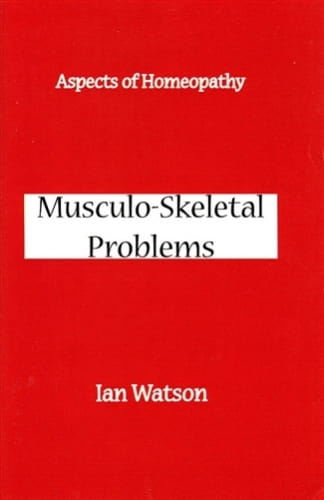Reprinted with the permission of The Society of Homeopaths, (from 'The Homeopath' Journal, Spring 2000 edition). Reviewed by Fiona Heubeck.
You may have come across the expression, 'inside every fat person, there's a thin one trying to get out'*. Well, that's how this book comes over: it would have made an excellent concise pamphlet. The author admits that he has done little to edit the tapes made of the day's seminar, in order to preserve the spontaneous and conversational tone of the event, but for fans of the 'virtual reality experience', complete, unexpurgated tapes are available.
I would have preferred a book which had been edited to limit the audience participation, as it often detracts from the points being made. It is also nice if proof-readers spot spelling mistakes in remedy names and medical conditions - the sort of words people might want to look up in a dictionary! (For the record, it's keloid' not 'cheloid', to mention only one.)
However, enough carping. Ian Watson refers to around eighty remedies throughout the lecture, putting them in useful therapeutic contexts. He does manage, despite the best efforts of the audience to distract him, to deliver the key information on musculoskeletal disorders. It's mostly solid first-aid type material, presented with the aim of giving us reliable therapeutic knowledge to have immediately at our disposal.
Having attended one of Ian Watson's seminars in Edinburgh, I had already witnessed his enthusiasm for disseminating homeopathic awareness through what he calls 'the Arnica experience', a point he emphasises here. In other words, if you get the acute remedy right, you have a better chance of encouraging patients to persist with homeopathic treatment. While he does not forget the significance of miasmatic and constitutional susceptibility to various conditions, he is dismissive of the 'ultra-classical' approach. Surely most of us, however, would agree with the notion of the appropriate totality. 1 really don't think it's ground-breaking to say that an acute condition is not best treated by one 30c, to be reviewed after a month.
Included in the book is an index of musculo-skeletal conditions, but there is no remedy index. If, like me, you can remember having
read about a remedy, but not where you read it, this is something you will miss. It is a problem in many of the anecdotal-style homeopathy books, particularly the older ones. In this age of high-tech wizardry, it wouldn't have been unduly difficult to add. The author acknowledges that this is not meant to be a comprehensive reference book, but such user-friendly features are always welcome.
The other technical information which is absent is a list of references, even though Ian Watson mentions in passing the work of Boger, Clarke, Burnett, Foubister, Eizayaga and Robin Murphy among others. This list will give you an idea of his prescribing style - clinical, therapeutic, but above all practical. Organ support, herbal tinctures, tissue salts and tautopathy all appear, just as described in his book A Guide to the Methodologies of Homeopathy. If it works, go for it!
New students may find this a useful purchase, if they are willing to work on the editing! In its favour, it's cheap, it is clearly printed, and it does cover musculoskeletal problems with a very good range of remedies. If you can cope with the style, you will unearth some gems. If, however, you were expecting something as well thought-out as his Methodologies, you may find that a more or less verbatim transcript of a lecture just isn't in the same league. This book could have been produced to appeal to the general public as well as to homeopaths, and in the spirit of empowering patients, I think it's a pity it has been left so rough.
(* My thin person went into hiding when I started my homeopathy course and hasn't come out yet!)

